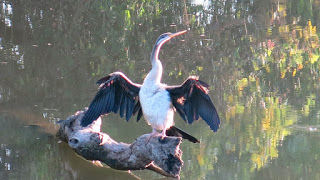Hardly a day goes by without someone coming over to ask about our Land Rover, or to tell us that they had one, their Dad did or they learned to drive in one. It all makes for meeting interesting people and provides a topic for discussion. On several occasions it’s opened doors that would not normally be open. So I guess I ought to pen a few words about Vin Rouge.
Built in 1995, Vin Rouge is a Defender 90 - that’s 90 inches between the hubs of the wheels - shorter that the average family car. Power is provided by a 2.5 litre turbo-charged diesel engine with a five speed manual gearbox and a high/low range transfer box with a difflock (that locks the drive to the front and rear axles). It’s a standard Land Rover set up. There’s no electronics and no air conditioning either.
Originally the vehicle belonged to a farmer in Cumbria who used it to take hay out to his sheep. We know that because it had large amounts of the stuff in dusty corners when we first bought it. A lady from Nottingham had it next and she toured Ireland in it. We bought it in early 2000 when the name Vin Rouge was determined, being a parody of red van and red wine.
Used to carry all sorts of family goods and people, towing trailers and for entering driving trials, it was even used to help plant a new forest, VR became part of the family, always there when needed. When we emigrated to Australia in 2008, VR came too.
Travelling in Australia requires rather different needs to travelling in the UK and so some modifications were made. Among these are (apologies to those not interested in this sort of thing):
- A second fuel tank
- Up-rated suspension and heavy duty shock absorbers to help with the extra weight (about three tons)
- A split battery system, the second battery is used for the fridge and LED lighting
- Two spare wheels, one on the bonnet and the other on a special bracket that opens with the rear door
- A snorkel to help reduce the amount of dust hitting the air filter
- Extended breathers from the axles, gearbox and transfer box, for the same reason
- Slightly larger wheels and Cooper Discovery S/T tyres
- Armoured protection for the steering bar, front axle and both sides
- Chequer plate strengthening for the bonnet and wings. We do tend to clamber over the vehicle.
- A 70 litre water tank
- Two drawers that hold tools, spare parts and domestic stuff
Those yellow things covering the side windows not only keep the sun off, but also prevent inquisitive fingers from trying to get in, but the main use is to assist recovery in mud and sand. They’re known as ‘waffle boards’.
The roof rack holds the roof top tent, a spare fuel can and Kim’s ‘washing machine’. Essentially low-tec, clothes, water and some special soap nuts from trees in the Himalayas go in. The sun heats the water, driving provides the agitation. Upon arrival, a quick rinse and hang out on a line under the awning and the washing is done. No ironing needed.
On the back door is the galley or kitchen. A two burner stove with grill locates in the drop-down shelf and is powered by one of the gas bottles clamped in special brackets on the back. Water is piped from the tank and the utensils are available in the adjacent drawers. Kim has become something of a specialist in cooking up excellent meals.
That’s our vehicle Vin Rouge. It takes us everywhere and is home for weeks on end. Basic, yes but adequate and fun. In a future blog I’ll talk about how we set about camping in the outback.



















































